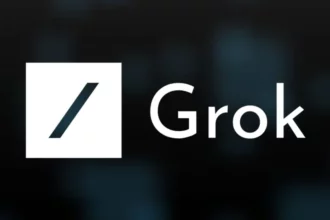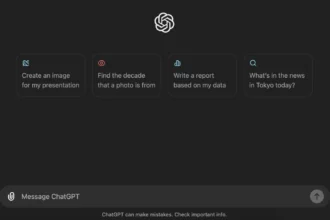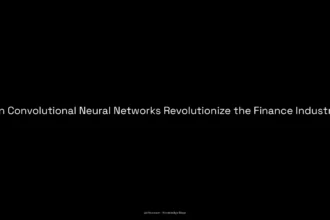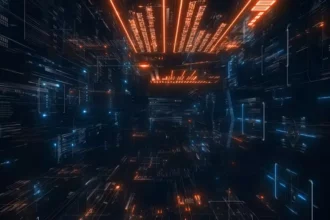- Overview
In the world of artificial intelligence and creative expression, Stable Diffusion has emerged as a transformative force in generating images from textual descriptions. This revolutionary model, developed by researchers at Stability AI, CompVis, and Runway, has democratized access to advanced image generation capabilities. With its ability to produce high-quality, photorealistic images based on simple prompts, it has rapidly gained traction among artists, designers, and technologists alike. - Importance
The significance of Stable Diffusion is underscored by its impact on the creative industries and the ongoing debates surrounding AI and art. As the technology becomes widely accessible, it raises questions about intellectual property, the nature of creativity, and the role of machines in artistic expression. Understanding Stable Diffusion and its implications is crucial in navigating the evolving landscape of AI-generated art.
Table of Contents
ToggleUnderstanding Stable Diffusion
Stable Diffusion is built upon deep learning principles. Specifically, it employs what’s known as Latent Diffusion, an innovative technique that allows it to generate complex images efficiently.
The Mechanics of Stable Diffusion
At its core, Stable Diffusion leverages a method called reverse diffusion in latent space. This technique essentially involves two main stages: adding noise to images and subsequently removing that noise to create coherent images based on the given text.
- Latent Space Representation
Stable Diffusion operates in a “latent space,” a compressed version of the data that captures essential features while discarding irrelevant information. By working within this space, the model can efficiently generate high-quality images without the need for intensive computational resources. - Text Conditioning
When a user inputs a text prompt, Stable Diffusion processes this text to understand its essence and generate visual representations. This step is crucial because the model must accurately interpret a wide range of linguistic styles and concepts to produce valid results. - Noise Removal Process
The core of the diffusion process involves transitioning from a noisy image back to a clear one. By iteratively refining the image and reducing noise, Stable Diffusion is able to create intricate visuals that faithfully represent the initial text prompt. This back-and-forth process effectively “teaches” the model how to interpret various textual cues and produce an appropriate visual output.
Key Innovations and Benefits
Stable Diffusion is a leap forward in AI-driven creativity for several reasons:
- Open Source Accessibility
Unlike many other commercial AI models, Stable Diffusion is open source. This means that anyone can access, modify, and utilize the model without significant barriers, fostering a culture of innovation and collaborative development. - Efficiency and Scalability
The ability to run Stable Diffusion models locally on consumer-grade hardware increases accessibility. No longer are artists and developers reliant on expensive cloud computing resources. This shift allows a broader audience to engage with image generation technology. - High-Quality Outputs
With advancements in the model architecture, the latest iterations of Stable Diffusion demonstrate improved performance with complex prompts and multi-subject scenes. Meeting the growing demands for better image fidelity and realism is essential in attracting both consumers and professionals to explore its capabilities.
The Creative Landscape Shaped by Stable Diffusion
With the rise of Stable Diffusion, the creative landscape has witnessed profound changes. Artists, designers, and industries are taking advantage of this technology in diverse ways, leading to a blend of traditional and contemporary artistic practices.
Artist Collaborations and New Forms of Expression
Stable Diffusion has empowered artists to explore new dimensions in their work:
- Hybrid Art Forms
Many creators are blending traditional art techniques with AI-generated outputs. By starting with an AI-generated image, artists can then refine and adjust these outputs to suit their visions, resulting in compelling hybrid art forms. - Augmented Creativity
Artists can leverage Stable Diffusion to overcome creative blocks or expedite the conceptualization process. Generating fast visual drafts based on verbal descriptions allows for more efficient brainstorming sessions and experimentation with styles.
Educational Applications in Creativity
As educational institutions increasingly recognize the value of technology in artistic training, Stable Diffusion plays a crucial role:
- Teaching AI Artistry
With the ability to generate images from text prompts, educators can use Stable Diffusion as a practical tool in art classes. It allows students to visualize their ideas before committing to traditional media, fostering creativity and technical skills alike. - Workshops and Collaborative Projects
Workshops centered around AI image generation grow in popularity, as they provide an interactive platform for individuals to learn about artificial intelligence and its implications in art.
Ethical Considerations and Future Challenges
While the rise of Stable Diffusion brings exciting opportunities, it also raises questions regarding ethics and the future of creativity:
- Intellectual Property Rights
The challenge of defining ownership rights for AI-generated art remains an ongoing debate. As the technology becomes mainstream, artists, businesses, and lawyers must work together to create frameworks that respect the contributions of human creativity while also addressing the output of AI. - Job Displacement Concerns
The fear of AI replacing human artists continues to loom over the creative sector. The advent of tools like Stable Diffusion raises valid concerns about the commodification of art and the potential loss of traditional creative jobs. Balancing the benefits of technological advancements with the preservation of human artistry is essential.
The Future of Image Generation
As Stable Diffusion continues to evolve, its enhancements represent both a challenge and an opportunity for various fields, particularly within the art and design communities. The convergence of technology and creativity opens up many possibilities.
Road Ahead for AI Models
The development of models like Stable Diffusion signifies a shift towards greater realism in AI-generated artwork. Enhancements in:
- Color Fidelity and Detail
Future iterations of Stable Diffusion are likely to focus on improved color accuracy, texture rendering, and detail within images, allowing artists to create more lifelike representations. - Interactive Elements
Further developments may introduce interactive features that allow users to redefine their input mid-generation, resulting in even more tailored outputs.
Encouraging Broader Adoption and Innovation
Stable Diffusion paves the way for collaborative partnerships across varied fields:
- Integration with Other Technologies
By combining Stable Diffusion with other AI tools, stakeholders can create interactive experiences where images are generated in real-time based on user input, such as in gaming or virtual reality. - Fostering New Genres
As more artists become familiar with Stable Diffusion’s capabilities, new genres may evolve out of the unique marriage between human creativity and AI functionality. Emerging styles will likely challenge traditional norms and inspire dialogues around the definition of art.
Conclusion
The ascent of Stable Diffusion signifies a pivotal shift in digital creativity, where AI plays a crucial role in translating words into imaginations. This open-source model democratizes access to powerful image generation technology while simultaneously provoking discussions about the future of art and intellectual property.
Summary of Article
In examining Stable Diffusion, we discovered how it operates, its innovative features, and its profound influence on contemporary artistry. The article emphasized the model’s operational mechanics, its creative applications, and pertinent ethical considerations emerging in the wake of its rise.
Implications
The findings of this article indicate that AI-driven tools are reshaping not just the artistic process but also the broader creative landscape. Artists and institutions must navigate this emerging terrain with careful consideration of both innovation and ethical responsibility, ensuring that technology serves to augment rather than supplant human creativity.
References
- Stable Diffusion – GitHub
- Stable Diffusion 3 – Stability AI
- High-performance image generation using Stable Diffusion in KerasCV





